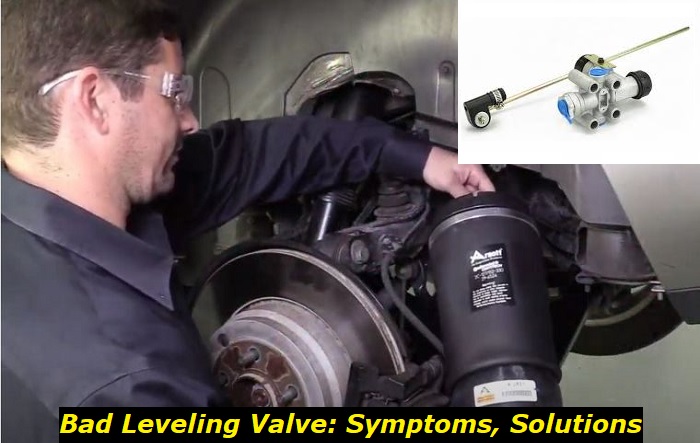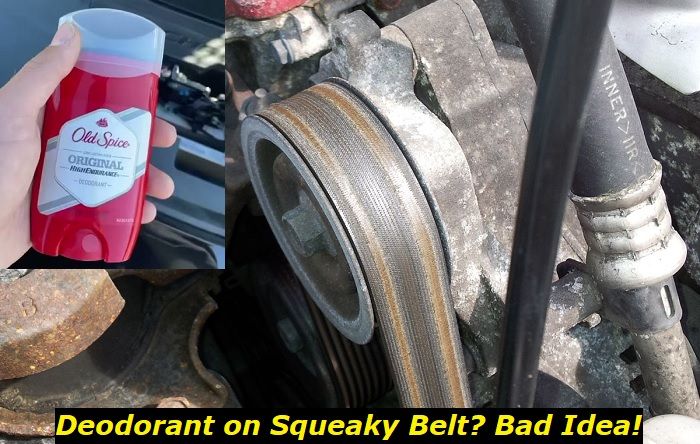Every driver would want to feel safe, comfortable, and confident while driving. To achieve this, you must ensure that every part of your vehicle works perfectly. However, leveling valve malfunction can cause alarm in many cases. The main challenge is detecting leveling valve issues and fixing them early enough.
However, first, let's look at what a leveling valve is and why it is essential to your vehicle.
Air suspension problems highlights
- Level of importance:medium
- Common reasons:internal suspension failure, electronic problem
- DIY inspection:impossible
- DIY repair:impossible
- Average price in shops:$550 - $1,900
- Average time:5 - 20 hours
- If ignored:fatal failure, car drops, hard driving

What is a Leveling Valve, and What Does it Do?
The leveling valve's purpose is to keep the car body level so passengers can board or debark safely at the station and improve driving comfort. It achieves this by adjusting the air suspension to its ideal setting. They serve various purposes, but their primary goal is to keep a vehicle's ride height between the frame and axles at the predetermined level.
The valves accomplish this by filling and aerating the airbags, which produce optimal tire-to-ground traction in conjunction with a set of shocks. They analyze axle movement relative to the frame. However, the angle of a valve's lever arm controls the ride height.
How Do I know if My Leveling Valve is Faulty?
A malfunction in the height leveling valves will result in a change in your driving experience, which you can detect with increased intensity. It may be hard to notice some problems in their early stages. So, here are some signs to look out for regarding a bad Height Leveling Valve.
1) Uncomfortably Bumpy Ride
The leveling valve may have gone bad if it appears that you're feeling every bump on the road or if the ride does not feel as smooth as before. When this happens, the Height Control Module will communicate with the vehicle's computer system to notify you.
Also, the Height Control Module may be faulty and fail to communicate the correct data. If this is the case, the Air Suspension System will not react to height changes as it should. You will now experience an uncomfortable ride when driving.
The suspension is a crucial component of your car, and if it is not functioning correctly, it could harm your tires and other sections of the vehicle. Besides the uncomfortable experience, it could pose a danger if you let this problem persist.
2) Uneven Ride Height
If your ride height is inconsistent, that is another indication that your leveling valve is malfunctioning. The vehicle could be lower in the front or back. This most frequently occurs when a car rests overnight and one side sags. The effect can harm the suspension system and result in uneven tire wear.
While you may only look at the discomforting effect, you must consider the long-term impact if you do not correct the problem. The vehicle can quickly lose balance due to unbalanced tires, which may cause an accident.
3) The Air Ride Suspension Light Illuminates
If the Height Leveling Valve malfunctions, your car will alert you with a warning light. Depending on your vehicle's make and model, this light may be referred to as the Ride Height Sensor or the Air Ride Suspension Light.
Before settling for one problem, a professional mechanic should diagnose your vehicle. Several other factors may trigger the Air Ride Suspension Light. If the leveling valve is the issue, your mechanic will pinpoint it precisely and replace the faulty component. They will also inspect the air suspension system to ensure all the other components are functioning correctly.
4) Difficult to Lift
If your car has problems lifting and lowering, one or all of your Leveling Valves may be the problem. Consequently, it is difficult to lower the vehicle after driving through water or mud or when it gets stuck on soft ground. If a driver pushes the lever down and finds it difficult to go all the way down, it could be a sign that the leveling valve is faulty. To ensure that the suspension system works correctly, you must pay attention to your Height Control Valve.
Possible Causes of Leveling Valve Failure
Before fixing defective Leveling Valves, it is essential to know the cause of the defect. Below are common causes of lousy Leveling Valves.
- A Broken Cable
The air cables that deliver air to the airbags can sometimes wear out since they are made of tubing. A defective or broken line cannot transport sufficient air to the airbags because air will keep leaking from the broken cable, causing the airbag to deflate.
- Faulty Airbag
What happens when the airbag itself has a problem? There are several reasons that experts link to bad or leaking airbags. The primary reason is poor installation. It means you cannot use it without special equipment. Sometimes, the bag is harmed by loose wiring, creating severe issues in the event of an accident.
- Aggressive and Careless Driving
You'll probably damage the Air Leveling Valve if you have a horrible driving habit. Hurrying through zigzag roadways can seriously harm the valve. Hard braking occasionally can potentially change the Leveling Valves position, which could damage it. You can easily prevent this by checking your speed, especially when driving on rough or uneven grounds.
- Loose Connections
While loose connections might seem simple, they significantly impact the performance of Leveling Valves. As previously mentioned, if the Ride Height Sensor has a loose connection, it may not convey the correct signal. It may also affect the signal timing, leading to subpar performance. Loose connections may occur if you drive for a long time without checking them.
- Broken or Leaking Valve
The Air Leveling Valve may not perform well if there is a leak in the valve. Consequently, the malfunctioning Leveling Valve will cause severe issues in an emergency. Not only does it cause an uncomfortable driving experience, but it can also lead to fatal accidents.
How to Fix Leveling Valve Problems
If you detect a Leveling Valve problem early enough, you can fix it yourself without involving a professional. However, it is advisable to call an expert to avoid causing further damage if you are unsure about your fixing skills.
1) Fixing a Broken Line
If you have the necessary tools, you can fix this independently. It would be best to have a union tube connector and extra airline. First, ensure that your car stays steady and on even ground. Then, use your union tube connectors to loop the new airline in after cutting out the damaged portion.
To ensure that it is completely secured, add some zip ties. However, this is simply a short-term solution. It will get you to your destination, but you must seek a permanent solution, probably replacing the entire tubing.
2) Fixing a Faulty Airbag
While it is rare to find a blowing airbag, it is one of the critical causes of Leveling Valve failure. You need special equipment or a professional mechanic to fix a faulty airbag.
If you cannot access a mechanic immediately, here is a solution to keep you moving. Use the blown bag to loosen the lugs on the wheel. Don't forget to secure the car by jacking it up. After removing your bag with your tools, you should replace this component. However, secure it to your clothing with a zip tie before reassembling it.
3) Check for Leaks around the Valves
Valve leakage is a common cause of Leveling Valve failure. So, check for any signs of leakage around the valves before you can start fixing any leveling valve issues. If you see any, the best solution is to replace the valve.
Clean up all rubber and metal parts using water and acid if the leveling valve has been leaking from the top and it's not in use. Check the pistons because if the valve is bad and the piston is not adequately secured, you could have an accident due to a faulty Leveling Valve.
4) Check the Screws on Your Leveling Valve
Check to ensure that the screws on the top and bottom of the Leveling Valves are tight. However, do not tighten them to the point where you strip out the threads on them. If these screws are loose, your valve may become inaccurate or misaligned and cause problems with your Leveling Valves.
Conclusion
The Leveling Valve has an adjustable arm that extends down to the axle. The arm's work is to control the ride's height, which must remain constant, whether loaded or unloaded. If the valve is in perfect working condition, this will always return to its initial height.
However, when it runs into any defect, it is advisable to find the right solution on time to avoid further damage. It helps keep your mind at ease while driving and guarantees your vehicle's best performance.
About the authors
The CarAraC research team is composed of seasoned auto mechanics and automotive industry professionals, including individuals with advanced degrees and certifications in their field. Our team members boast prestigious credentials, reflecting their extensive knowledge and skills. These qualifications include: IMI: Institute of the Motor Industry, ASE-Certified Master Automobile Technicians; Coventry University, Graduate of MA in Automotive Journalism; Politecnico di Torino, Italy, MS Automotive Engineering; Ss. Cyril and Methodius University in Skopje, Mechanical University in Skopje; TOC Automotive College; DHA Suffa University, Department of Mechanical Engineering






Add comment